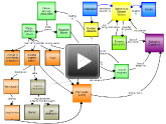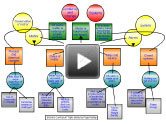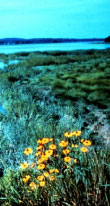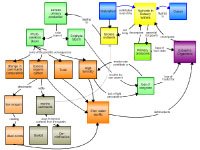|
|
|
||||||||||||||||||
About these Webinars: The ROLE Model webinars provide scientists with the opportunity to interact with educators and present their research in a non-traditional format - through multimedia concept maps created with the Concept Map Builder and presented through the Ocean Climate Interactive. [more]
About this Scientist:
Linda Kalnejais is an Asst. Professor of Oceanography at the University of New Hampshire. She researches the generation, cycling, fate, and effects of contaminants in the environment. She is especially drawn to studying the coastal zone because of the complex processes that occur in this densely populated region, and which, therefore, receives most of the contaminants carried by the terrestrial water cycle. [more]
About this Educator:
Sharon Gallant teaches environmental science at Gardiner Area High School in Gardiner, ME, where she is also known as the "Queen of Green" for her role in encouraging students to adopt an environmental stewardship ethic. She received her M.S. in geosciences from Mississippi State University and was a participant at the COSEE-OS Educator-Scientist Climate Change Workshop at the Darling Marine Center in November 2008. [more]















